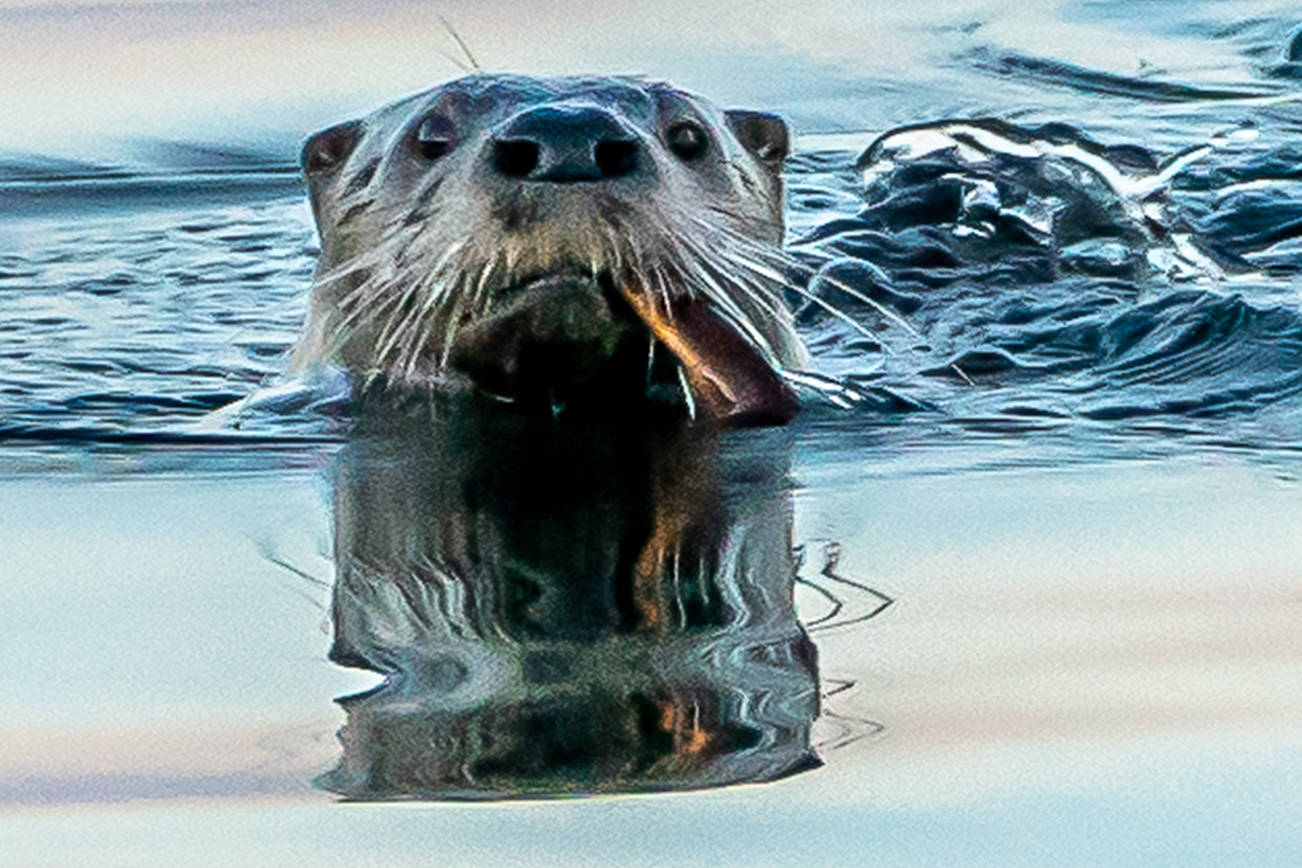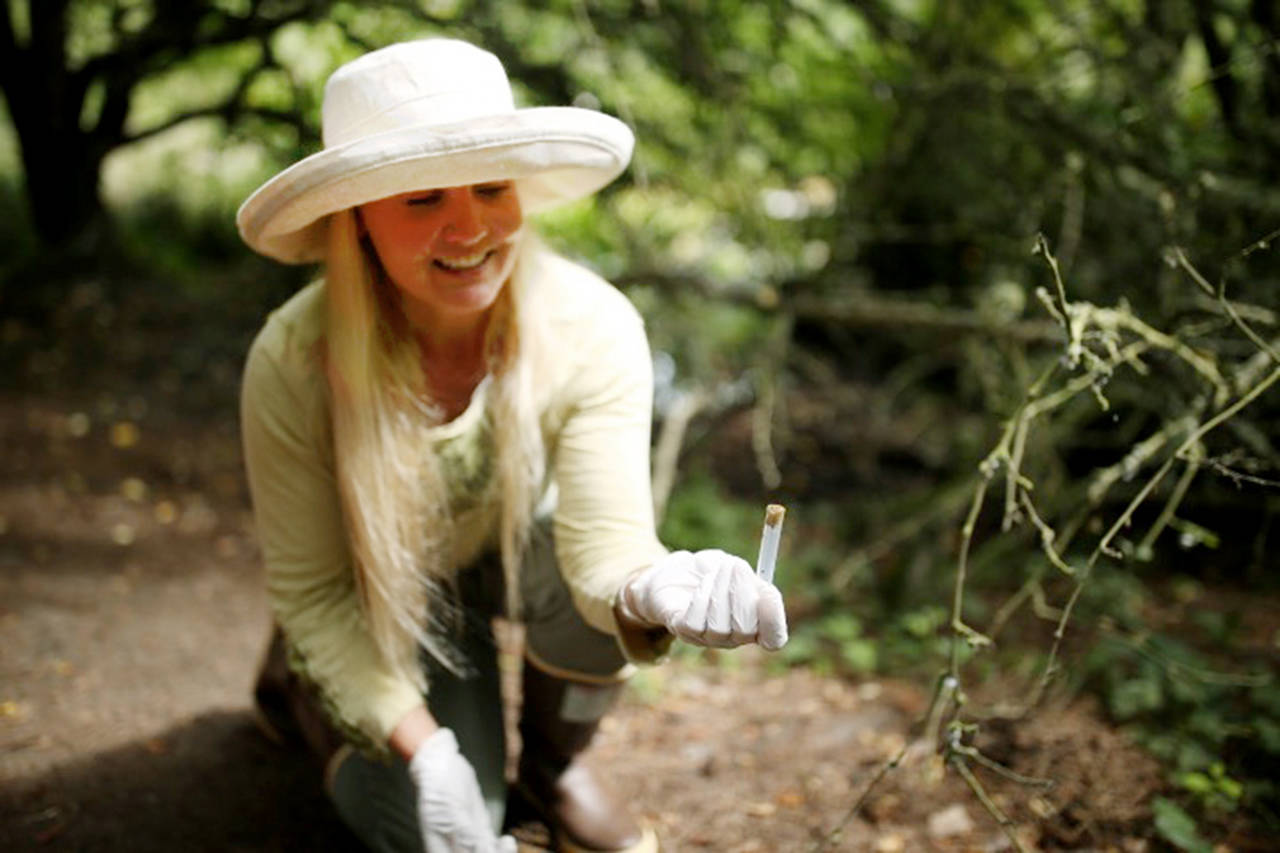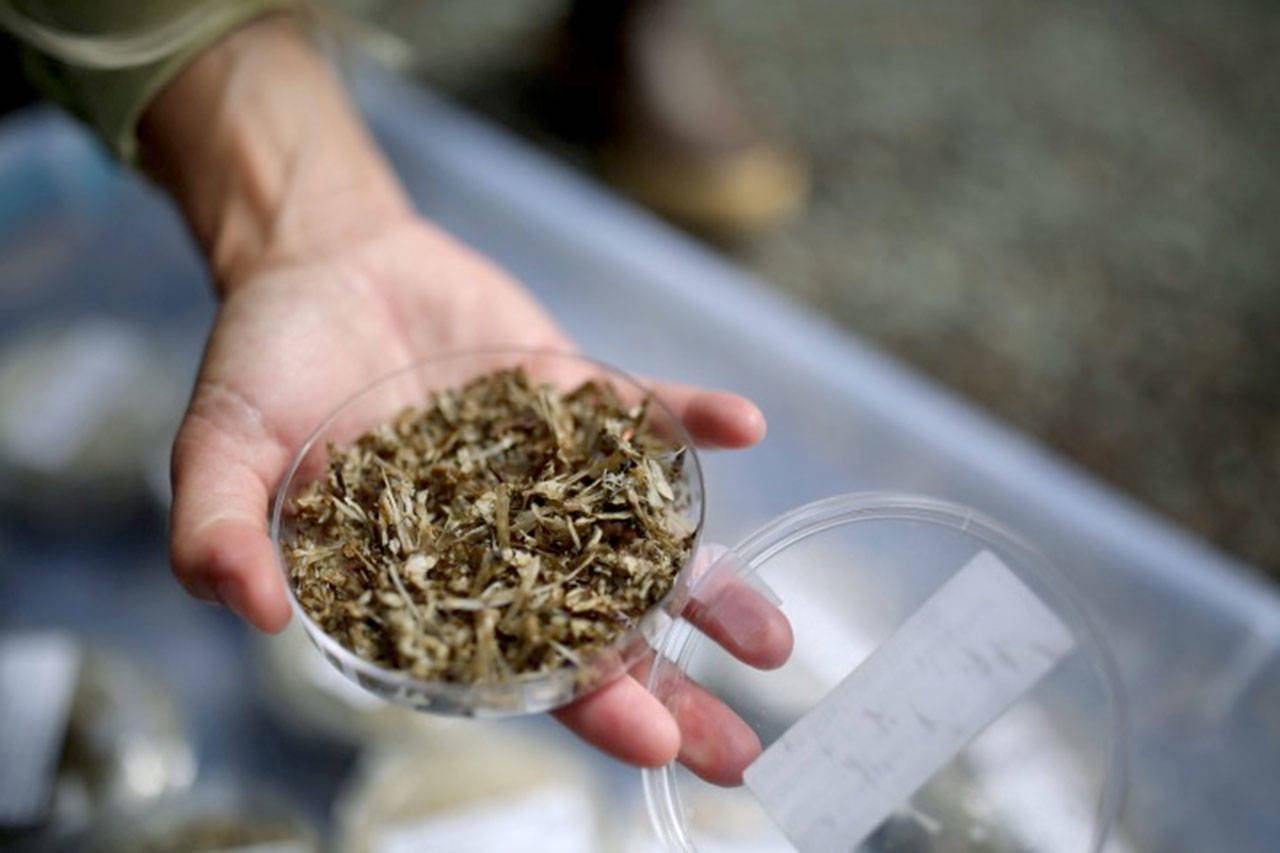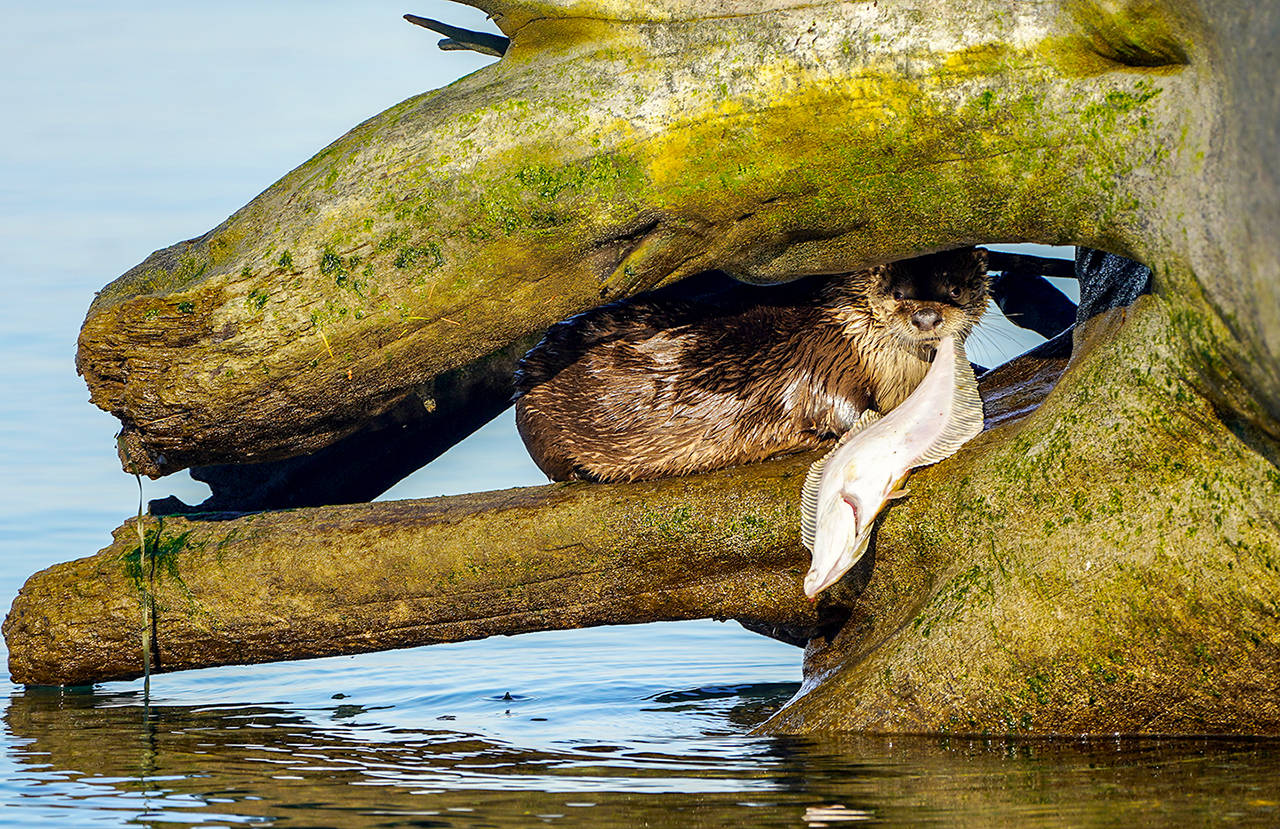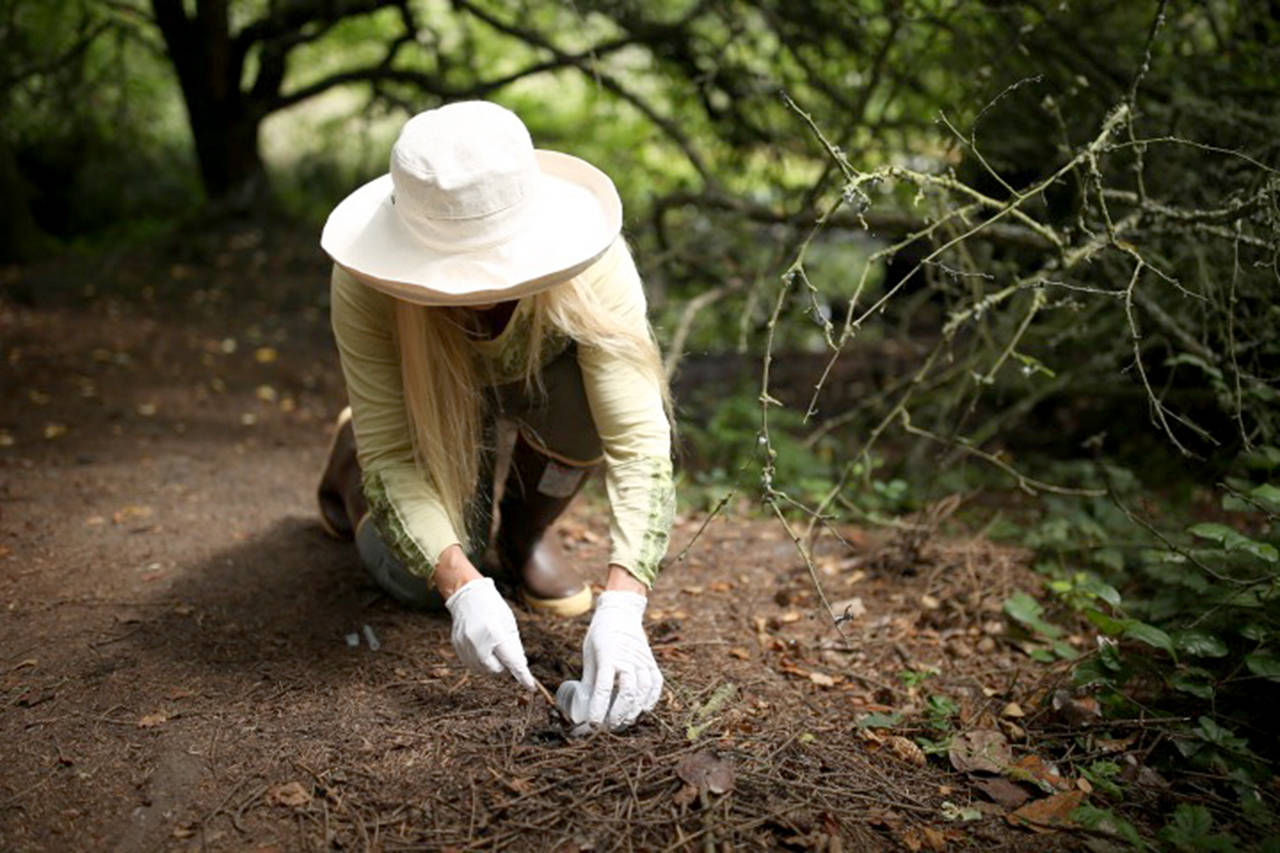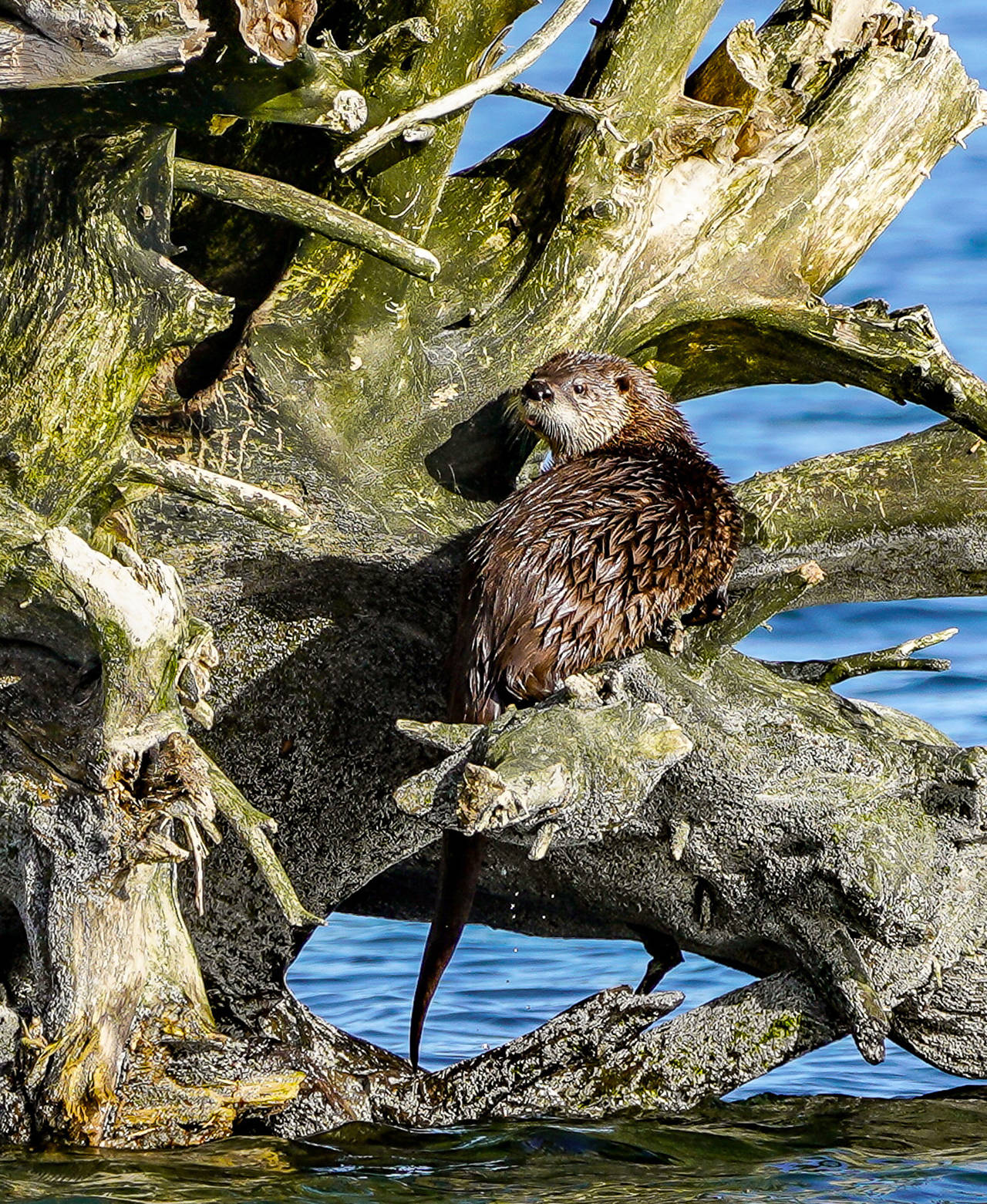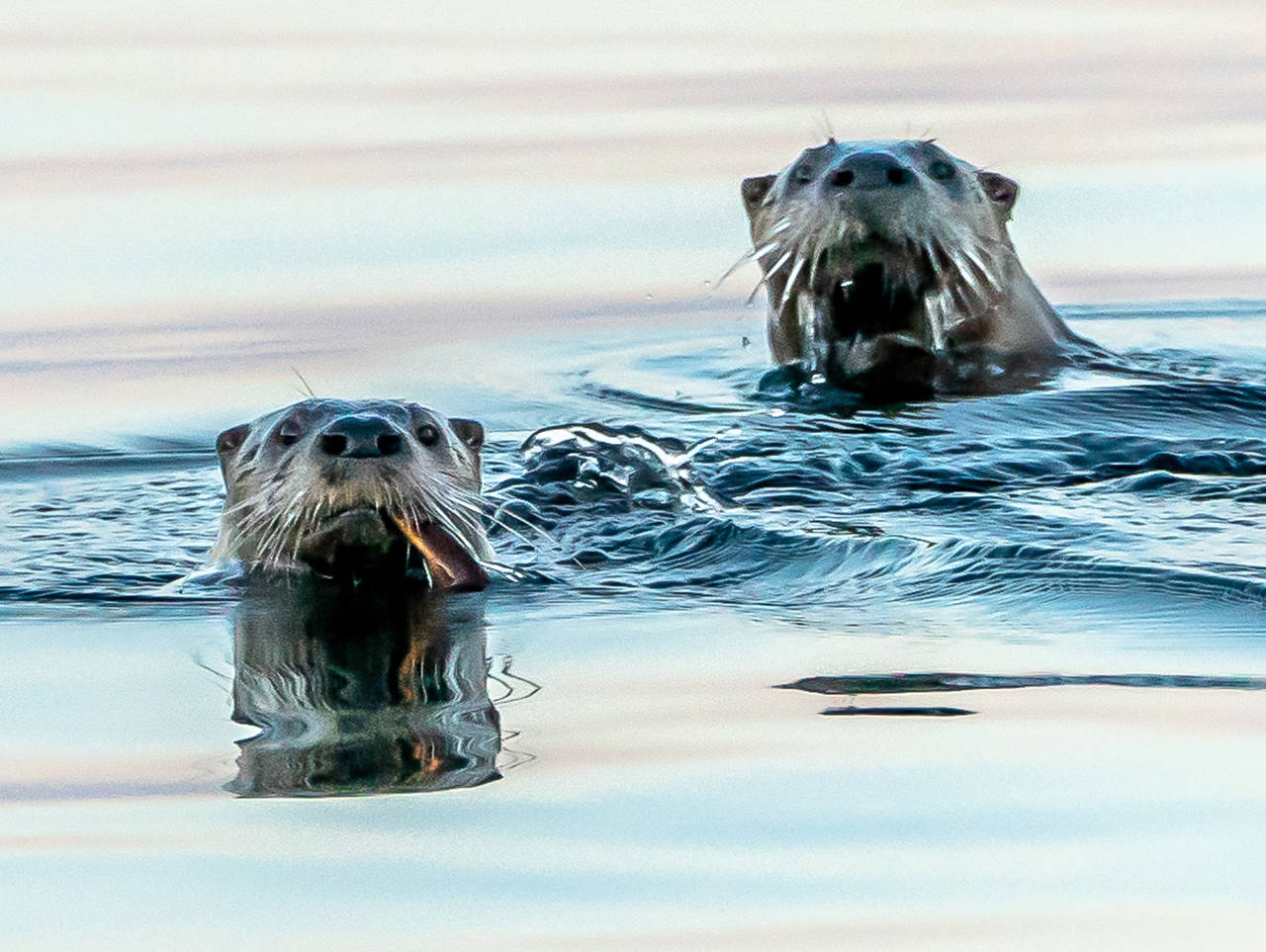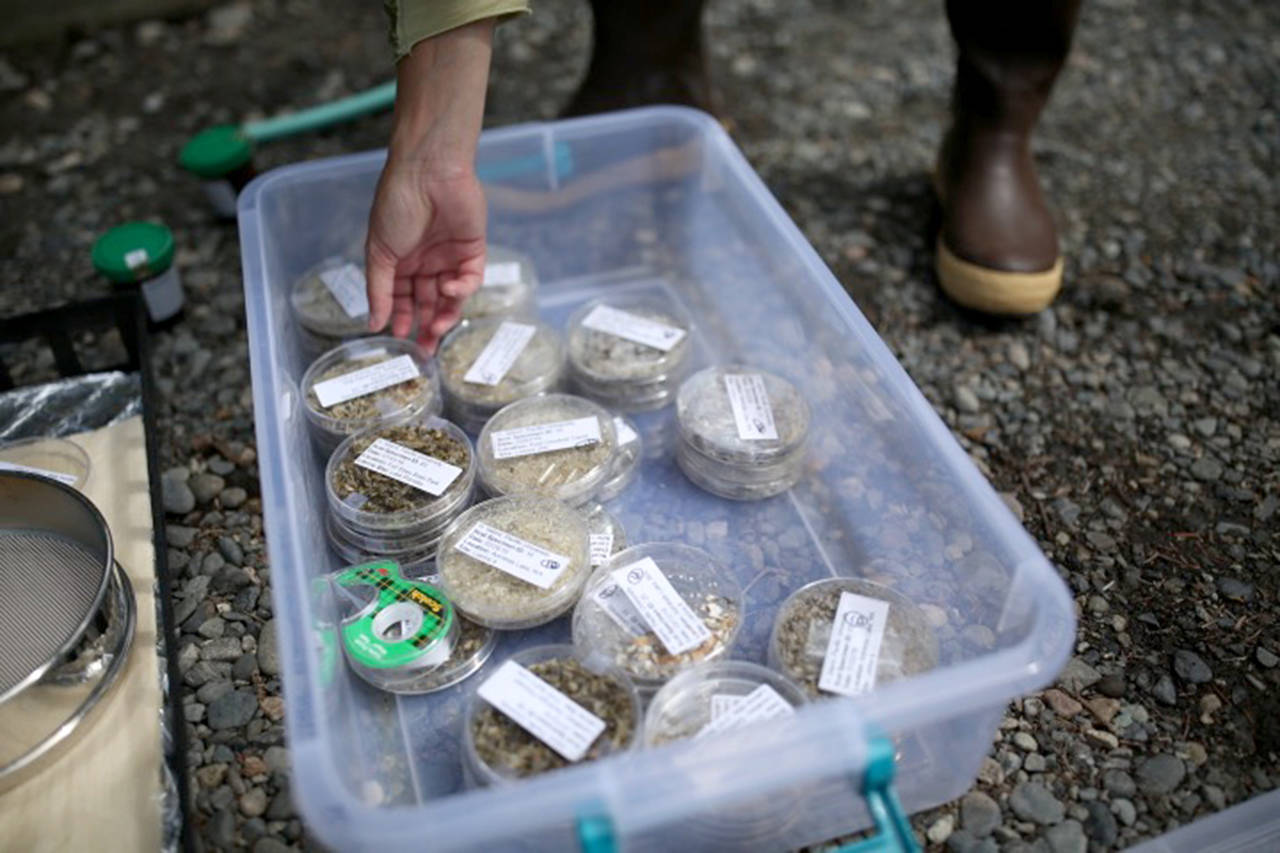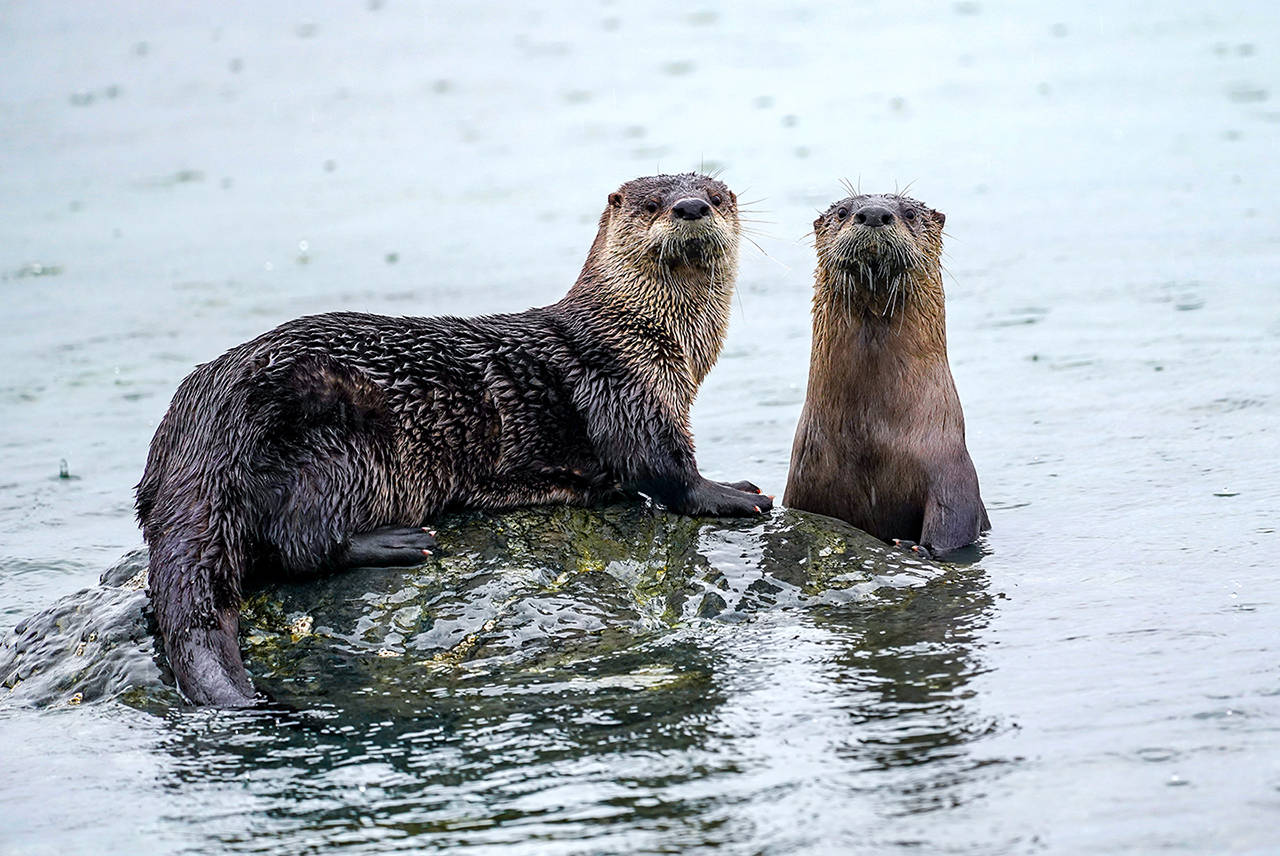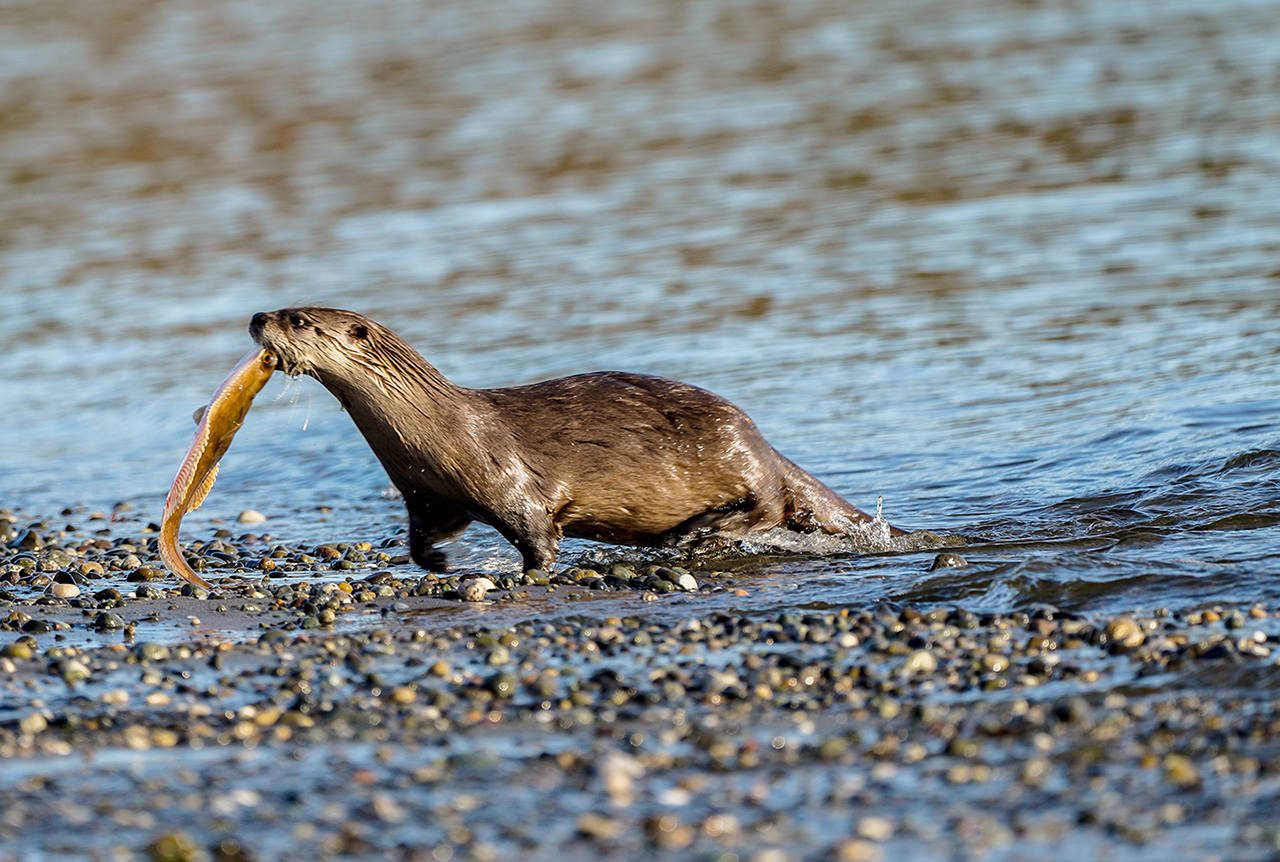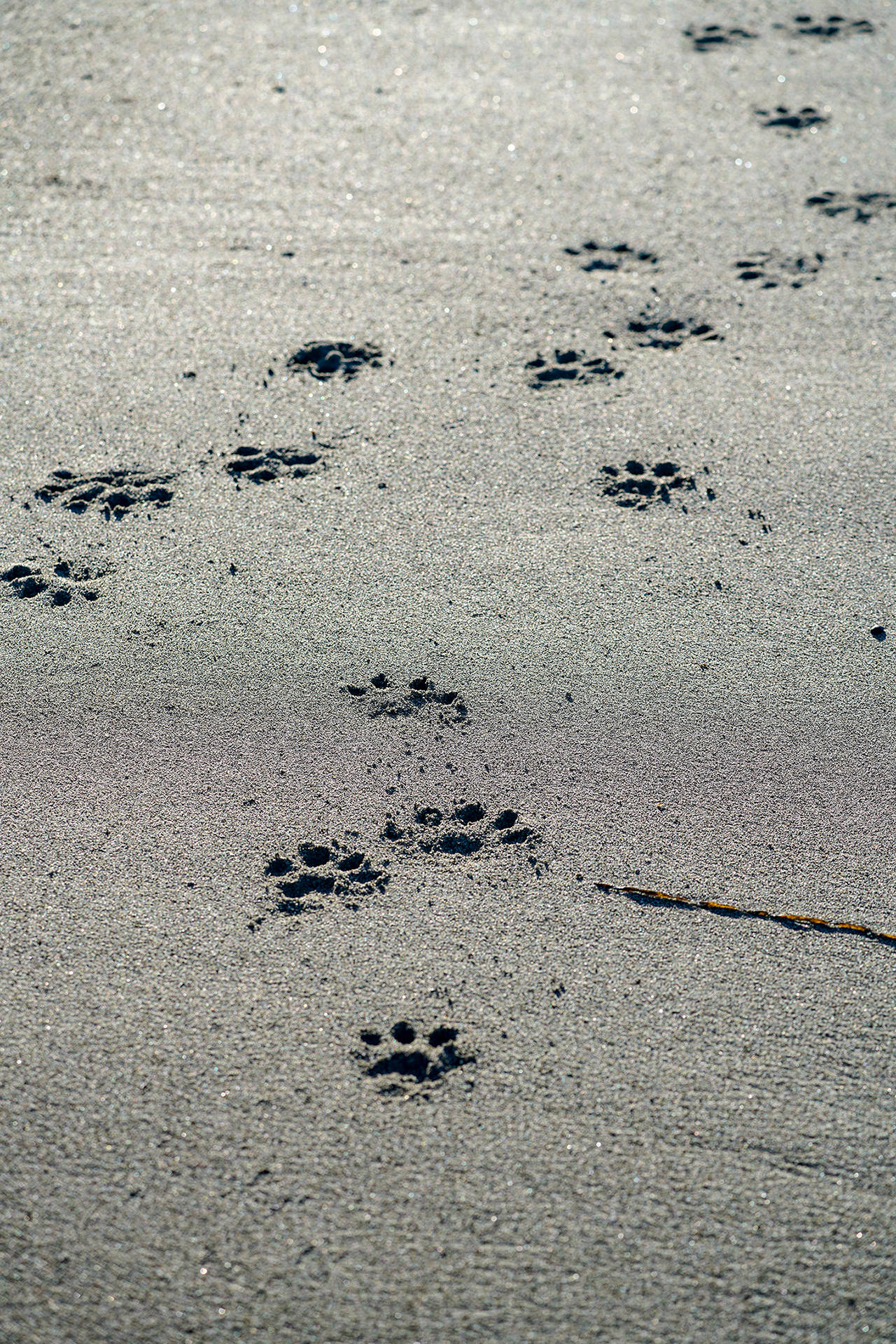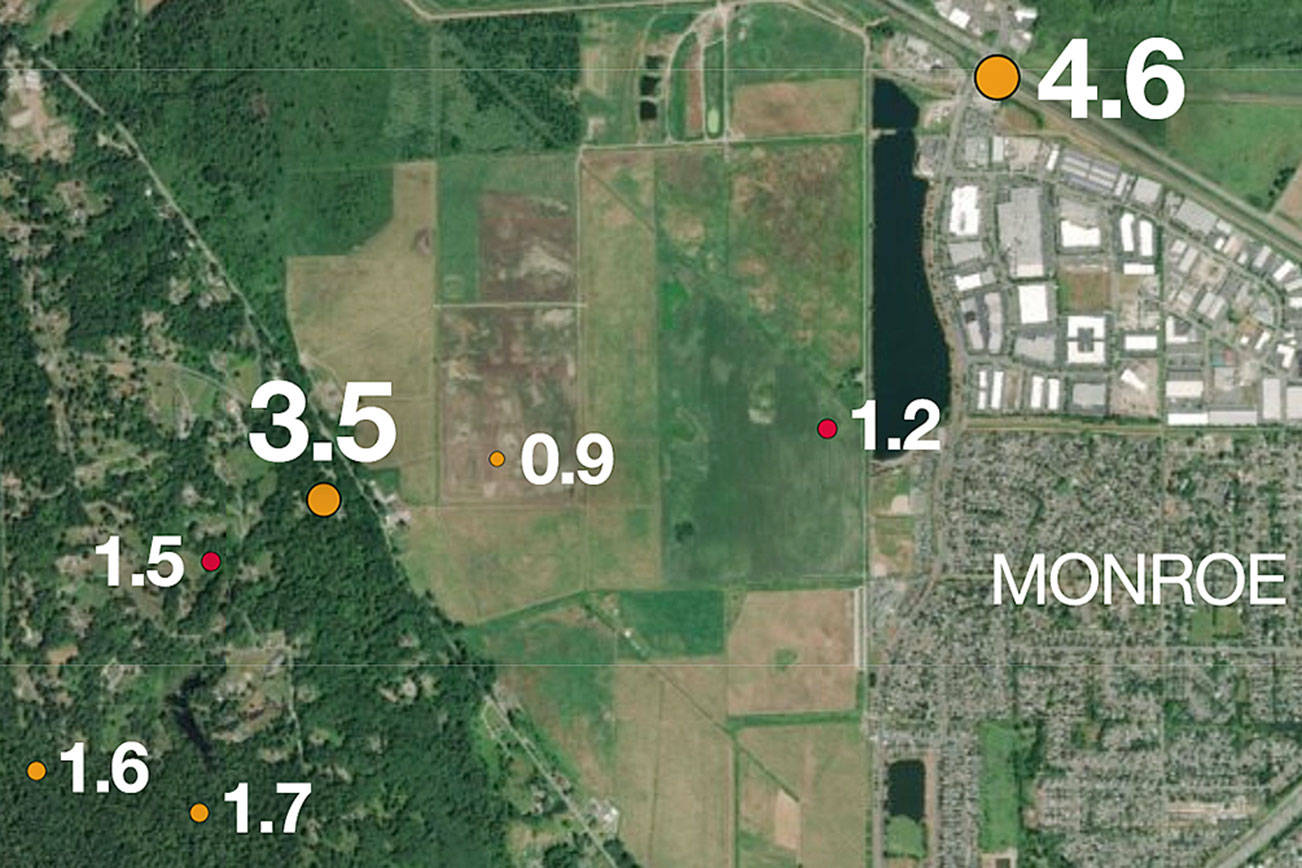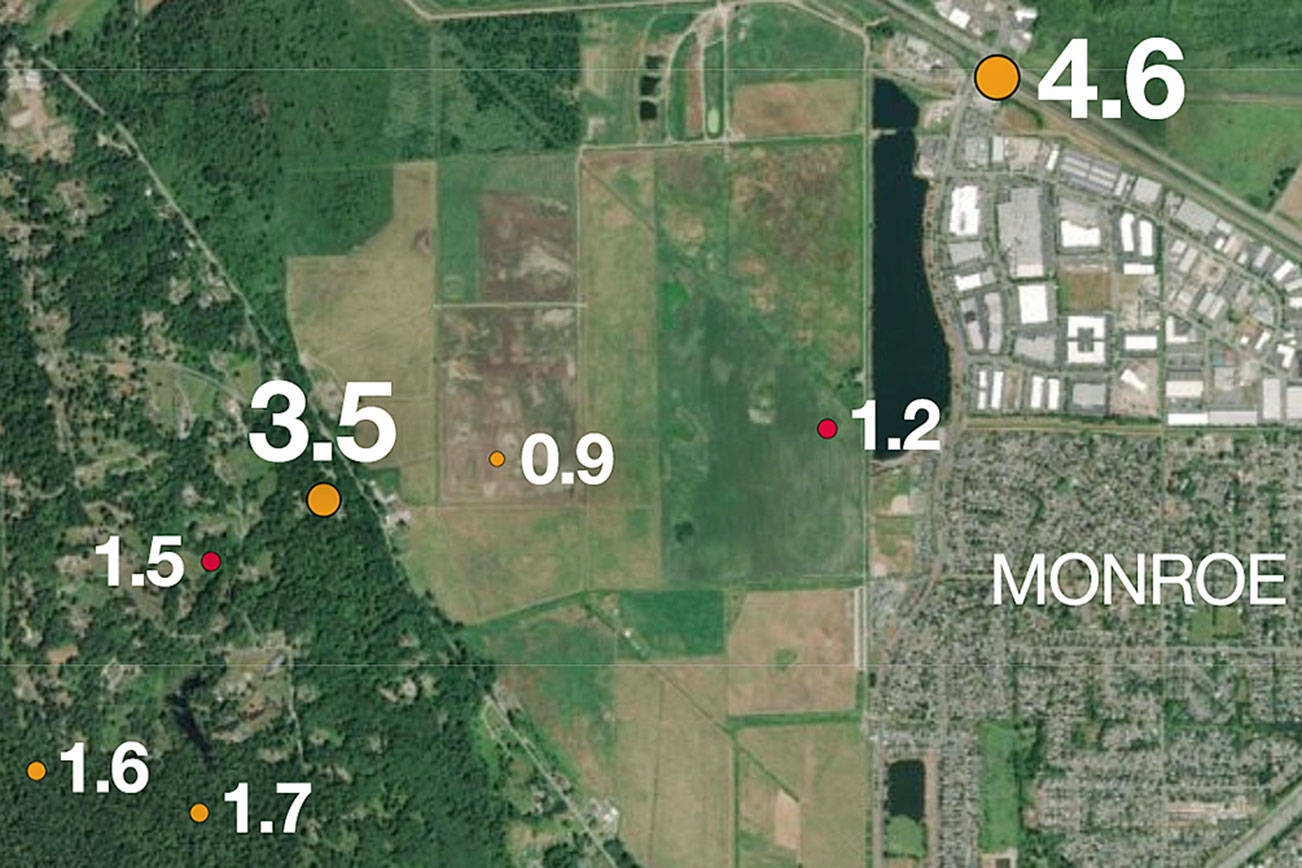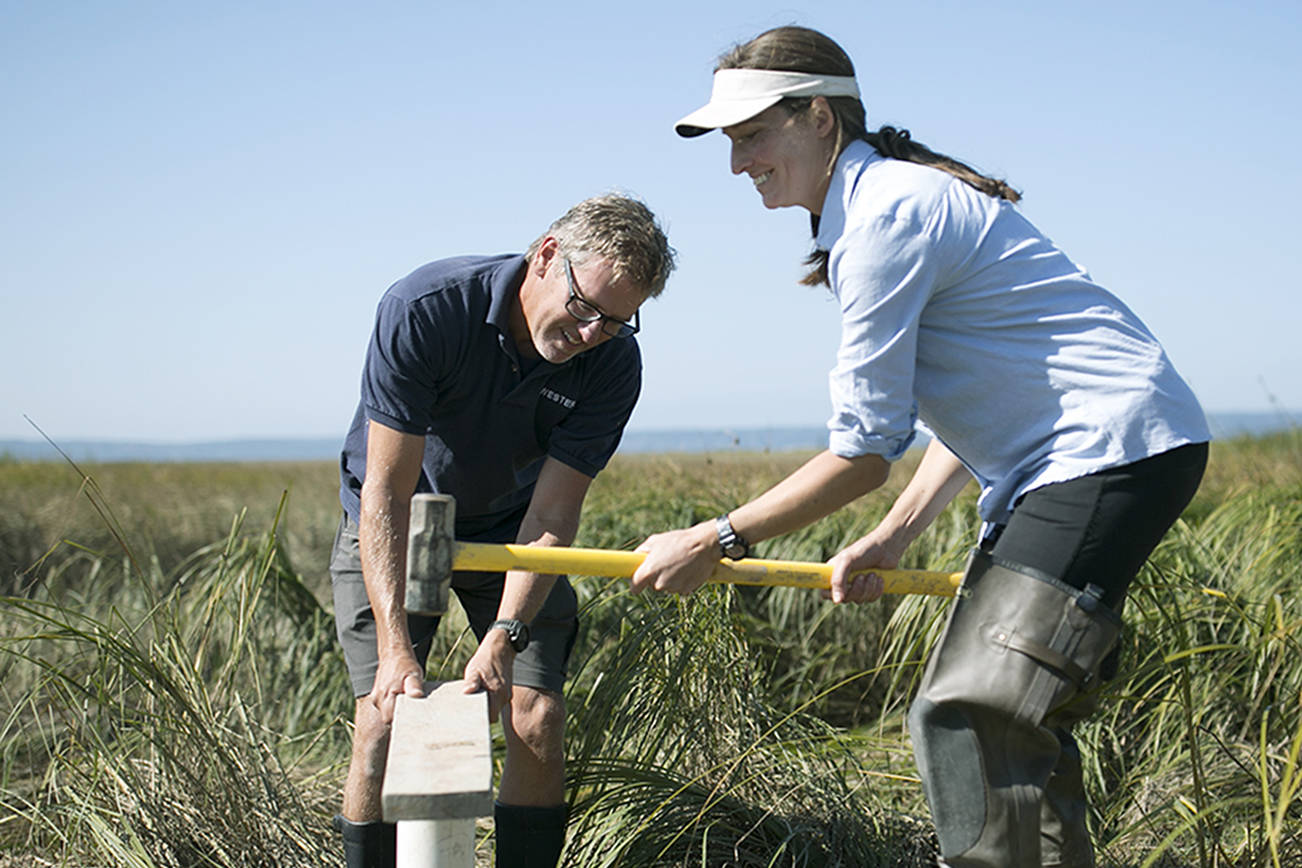COUPEVILLE — As she strode along the beach at Fort Ebey State Park last week, Heide Island wasn’t taking in the crystal-clear view of the Olympic Mountains. Her eyes were trained to the ground, on the hunt for otter scat.
This is how she’s spent much of her time lately.
Island, a comparative animal behaviorist from Pacific University in Oregon, has been studying North American river otters on Whidbey Island for the past year.
Through studying the otters, she can learn about pollution in the surrounding watershed.
Otters are an “ecological canary in the coal mine,” Island said. The health of otters is indicative of the health of the watershed, and they’re the first to die if their habitat is contaminated.
They’re also considered a least-concern species — meaning they’re not even close to being endangered.
Because of that designation, Island was able to avoid much of the red tape involved with researching endangered animals. That played a role in choosing river otters as her subject matter.
The cuteness factor also doesn’t hurt, she said.
Starting last September, Island’s days began around 4 a.m. to catch otters out and about. They’re most active at dawn and dusk.
She followed some 30 otters as they traversed Whidbey Island. She got to know one particular group, called a romp, best.
Patches, who Island named for her muzzle markings, traveled with her three pups Crest, Swoosh and Slash.
Pups usually stay with their mothers for around six months, but Patches’ have stuck around for a year.
Island came on to the scene last September, when the pups had just learned to swim. She’s watched them eat, sleep and play in and around Crockett Lake Preserve next to Admiralty Bay.
Through the lenses of her binoculars and trail cameras, she’s gotten to know the otters’ personalities — from the booty-shaking dance they do before using the bathroom to inventive hunting techniques.
“Patches is an exceptionally good mother,” Island said.
Otters aren’t inherently good parents. They’re known to abandon their offspring if circumstances aren’t ideal for raising them.
River otters — not to be confused with much larger North American sea otters — spend time in both marine and freshwater systems as well as on land.
Otters’ behavior is still somewhat of a mystery to researchers, Island said.
They sometimes travel in romps, sometimes alone. Sometimes they return to the same den or nest to sleep, sometimes not.
“It’s kind of like you,” Island said.
Otter habits depend entirely on preference, access and circumstances.
Island’s daily routine, then, was never the same.
Last week, on her last day of data collection, Island stalked the perimeter of an otter latrine in her XTRATUF boots. She crouched down, long blonde hair swinging under a bucket hat, to examine a recent specimen.
“This is really the important stuff for talking about habitat ecology,” she said while scooping a thick, light-brown jelly into a vial.
The substance is digestive mucus, and it’s pretty gross. But this is what Island can send to a lab to test for pollutants in the otter’s system.
In a good week, Island would gather 15 to 20 samples of scat and about two of the digestive mucus.
When she finds a bunch of samples in one spot, she counts them, sprinkling biodegradable glitter as she goes to keep from losing track.
“Just some sassy otter poop,” she said.
Island’s time on Whidbey kicked off the first of a five-year study. She’s already answered questions about the otters’ diets, foraging strategies and behaviors.
Previous studies of river otter diet in the San Juans suggested they dine on Puget Sound’s dwindling salmon population as well as endangered rockfish. But Island found river otters in the Admiralty Bay area of the island prefer sculpin and flatfish, which are more plentiful and easier to catch.
Now, she’ll be working with a lab to identify organic pollutants in her samples and document the otters’ genetic pedigree. That will require additional funding.
Island never meant to end up on Whidbey Island. She originally received a grant from Pacific University to study the otter population at Seattle Pacific University’s Blakely Island Field Station in the San Juans. When she showed up, the entire otter (and raccoon) population had died in an outbreak of canine distemper, a viral disease that attacks the respiratory, gastrointestinal and nervous systems.
Then, on a day trip to Whidbey Island with her husband, four otters ran across the road in front of their truck.
“And that was the start of being on Whidbey Island,” she said.
Her work has been aided, in no small part, by some deeply invested neighbors.
Folks all over Whidbey Island email her to report otter sightings. At a talk she gave on her research, the room was packed with 180 people.
“We have a public here that’s just really interested in wildlife,” said Kyle Ostermick-Durkee, stewardship specialist at the Whidbey Camano Land Trust. He worked with Island to permit her research on trust land.
On Friday, Island headed back down to Oregon to rev up for the school year, but her work on Whidbey is far from finished.
She’ll return monthly to collect data from her trail cameras. In the future, she plans to get her students involved with the research.
Once the study is complete, Island hopes the results will spur additional research that builds on what she’s learned.
“You can’t be an expert in all of it,” she said. “You hit the data points that you can, and then you invite collaborators to come in and help you finish the story.”
And it’s not just about the otters. Island’s data will help determine the health of their habitat — which has implications for the area’s human inhabitants, too.
“If it’s affecting them, it’s going to be affecting us, too,” Island said.
Julia-Grace Sanders: 425-339-3439; jgsanders@heraldnet.com.
